Gangliosidosis Cut Out Stock Images
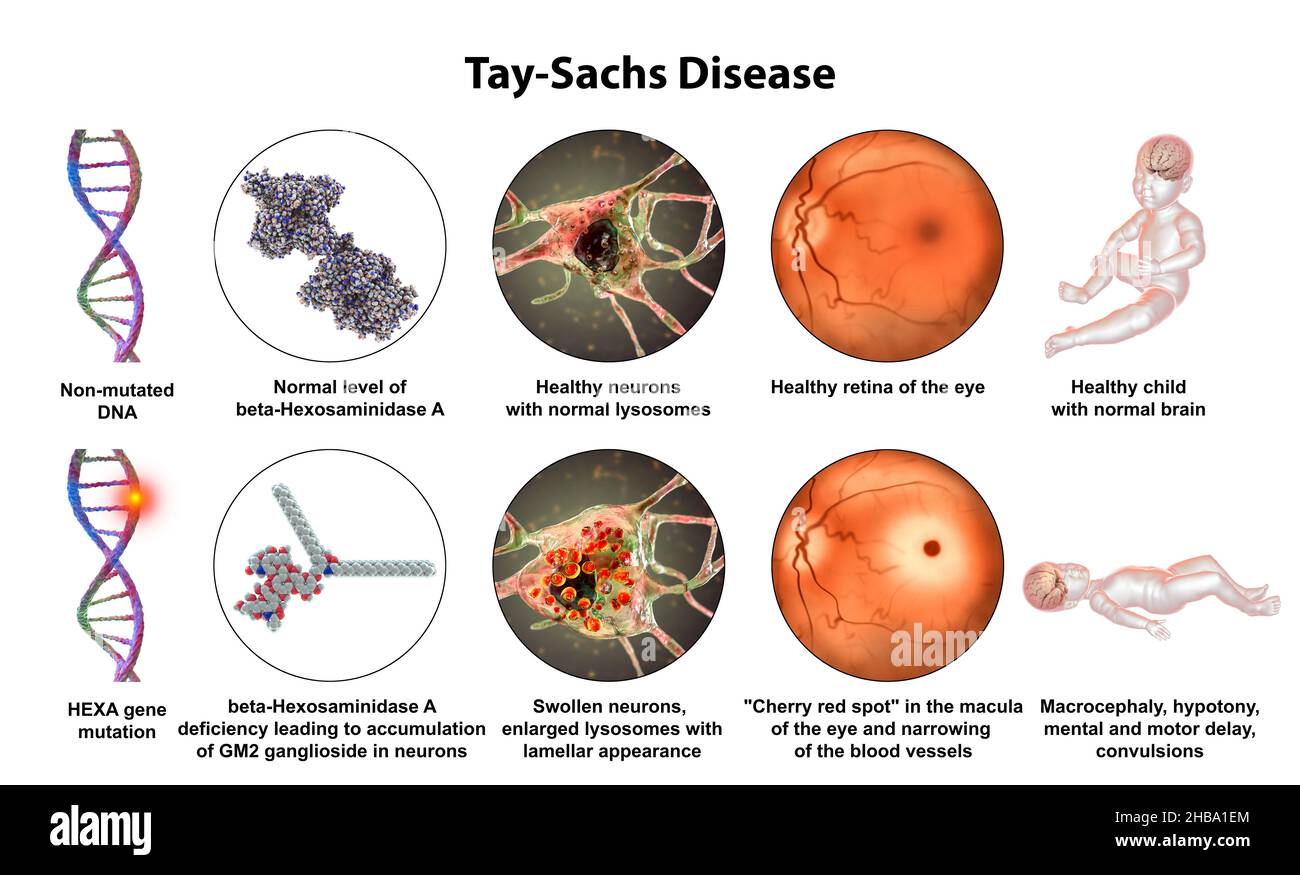 Illustration of Tay-Sachs disease, a genetic disorder that progressively destroys brain neurons. It is caused by a mutation in the HEXA gene of chromo Stock Photohttps://www.alamy.com/image-license-details/?v=1https://www.alamy.com/illustration-of-tay-sachs-disease-a-genetic-disorder-that-progressively-destroys-brain-neurons-it-is-caused-by-a-mutation-in-the-hexa-gene-of-chromo-image454451500.html
Illustration of Tay-Sachs disease, a genetic disorder that progressively destroys brain neurons. It is caused by a mutation in the HEXA gene of chromo Stock Photohttps://www.alamy.com/image-license-details/?v=1https://www.alamy.com/illustration-of-tay-sachs-disease-a-genetic-disorder-that-progressively-destroys-brain-neurons-it-is-caused-by-a-mutation-in-the-hexa-gene-of-chromo-image454451500.htmlRF2HBA1EM–Illustration of Tay-Sachs disease, a genetic disorder that progressively destroys brain neurons. It is caused by a mutation in the HEXA gene of chromo
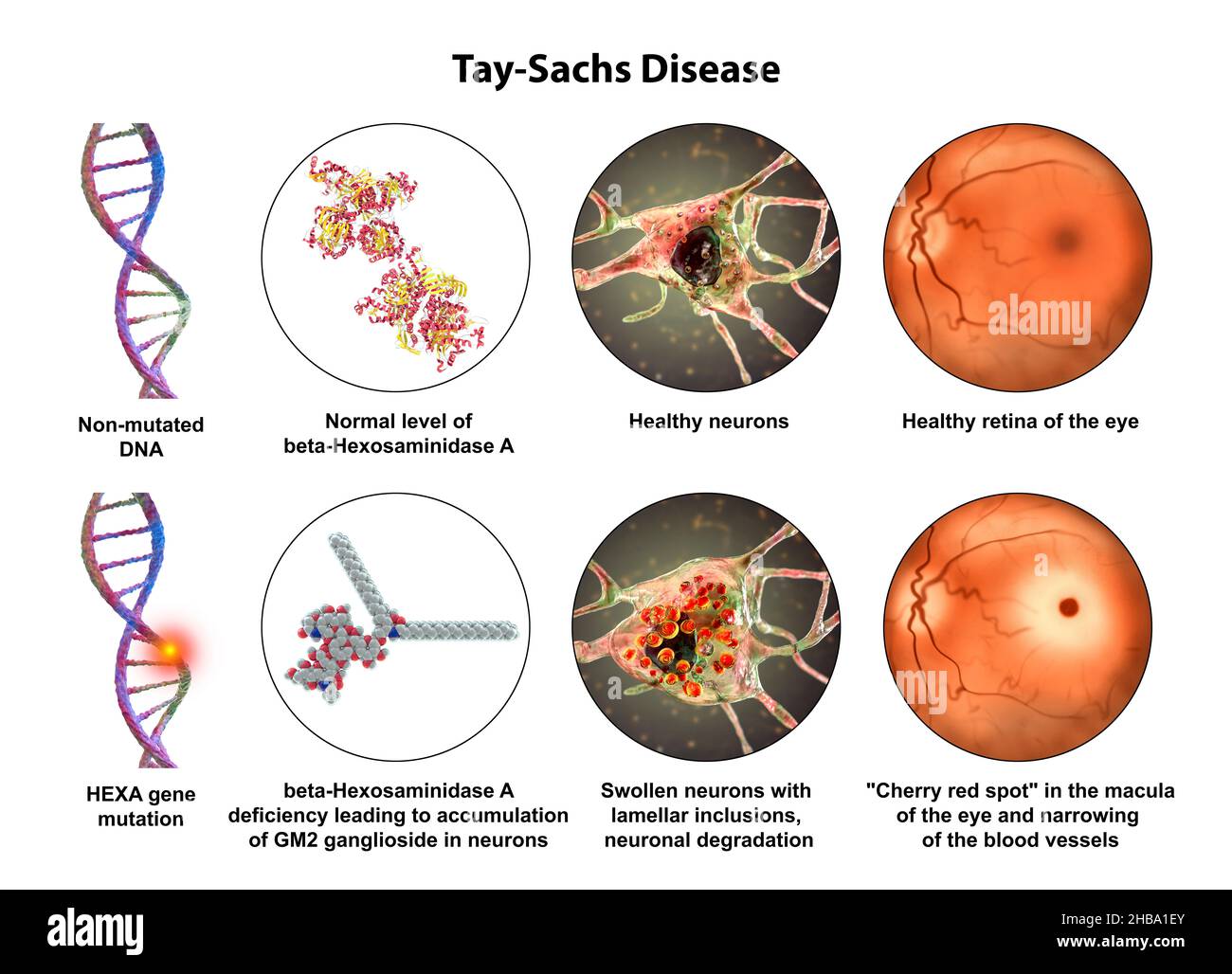 Illustration of Tay-Sachs disease, a genetic disorder that progressively destroys brain neurons. It is caused by a mutation in the HEXA gene of chromo Stock Photohttps://www.alamy.com/image-license-details/?v=1https://www.alamy.com/illustration-of-tay-sachs-disease-a-genetic-disorder-that-progressively-destroys-brain-neurons-it-is-caused-by-a-mutation-in-the-hexa-gene-of-chromo-image454451507.html
Illustration of Tay-Sachs disease, a genetic disorder that progressively destroys brain neurons. It is caused by a mutation in the HEXA gene of chromo Stock Photohttps://www.alamy.com/image-license-details/?v=1https://www.alamy.com/illustration-of-tay-sachs-disease-a-genetic-disorder-that-progressively-destroys-brain-neurons-it-is-caused-by-a-mutation-in-the-hexa-gene-of-chromo-image454451507.htmlRF2HBA1EY–Illustration of Tay-Sachs disease, a genetic disorder that progressively destroys brain neurons. It is caused by a mutation in the HEXA gene of chromo
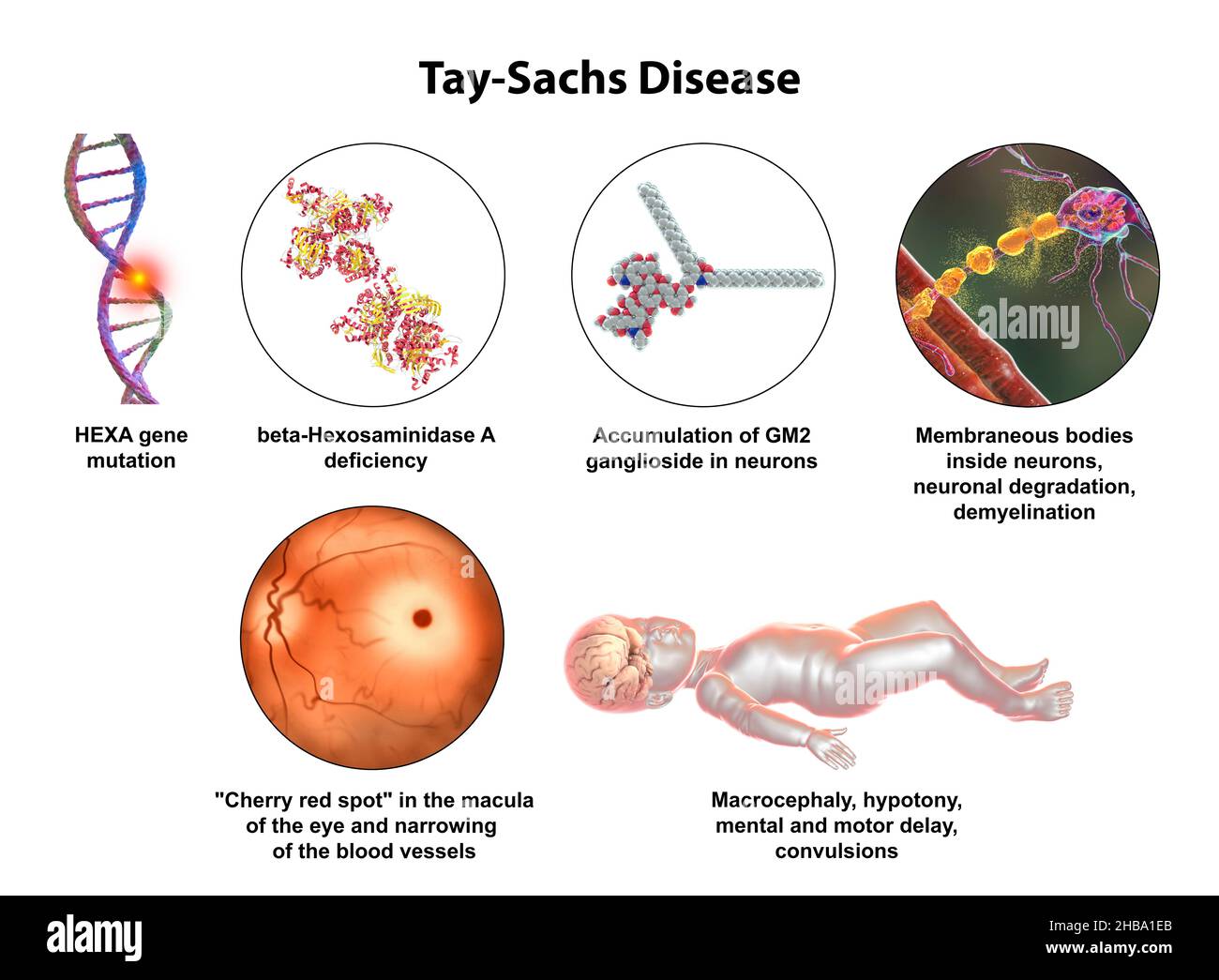 Illustration of Tay-Sachs disease, a genetic disorder that progressively destroys brain neurons. It is caused by a mutation in the HEXA gene of chromo Stock Photohttps://www.alamy.com/image-license-details/?v=1https://www.alamy.com/illustration-of-tay-sachs-disease-a-genetic-disorder-that-progressively-destroys-brain-neurons-it-is-caused-by-a-mutation-in-the-hexa-gene-of-chromo-image454451491.html
Illustration of Tay-Sachs disease, a genetic disorder that progressively destroys brain neurons. It is caused by a mutation in the HEXA gene of chromo Stock Photohttps://www.alamy.com/image-license-details/?v=1https://www.alamy.com/illustration-of-tay-sachs-disease-a-genetic-disorder-that-progressively-destroys-brain-neurons-it-is-caused-by-a-mutation-in-the-hexa-gene-of-chromo-image454451491.htmlRF2HBA1EB–Illustration of Tay-Sachs disease, a genetic disorder that progressively destroys brain neurons. It is caused by a mutation in the HEXA gene of chromo
 Molecule of beta-hexosaminidase A enzyme, or HEXA, illustration. Mutations in the gene encoding HEXA decrease the hydrolysis of GM2 gangliosides, which is the main cause of Tay-Sachs disease. Stock Photohttps://www.alamy.com/image-license-details/?v=1https://www.alamy.com/molecule-of-beta-hexosaminidase-a-enzyme-or-hexa-illustration-mutations-in-the-gene-encoding-hexa-decrease-the-hydrolysis-of-gm2-gangliosides-which-is-the-main-cause-of-tay-sachs-disease-image454451417.html
Molecule of beta-hexosaminidase A enzyme, or HEXA, illustration. Mutations in the gene encoding HEXA decrease the hydrolysis of GM2 gangliosides, which is the main cause of Tay-Sachs disease. Stock Photohttps://www.alamy.com/image-license-details/?v=1https://www.alamy.com/molecule-of-beta-hexosaminidase-a-enzyme-or-hexa-illustration-mutations-in-the-gene-encoding-hexa-decrease-the-hydrolysis-of-gm2-gangliosides-which-is-the-main-cause-of-tay-sachs-disease-image454451417.htmlRF2HBA1BN–Molecule of beta-hexosaminidase A enzyme, or HEXA, illustration. Mutations in the gene encoding HEXA decrease the hydrolysis of GM2 gangliosides, which is the main cause of Tay-Sachs disease.
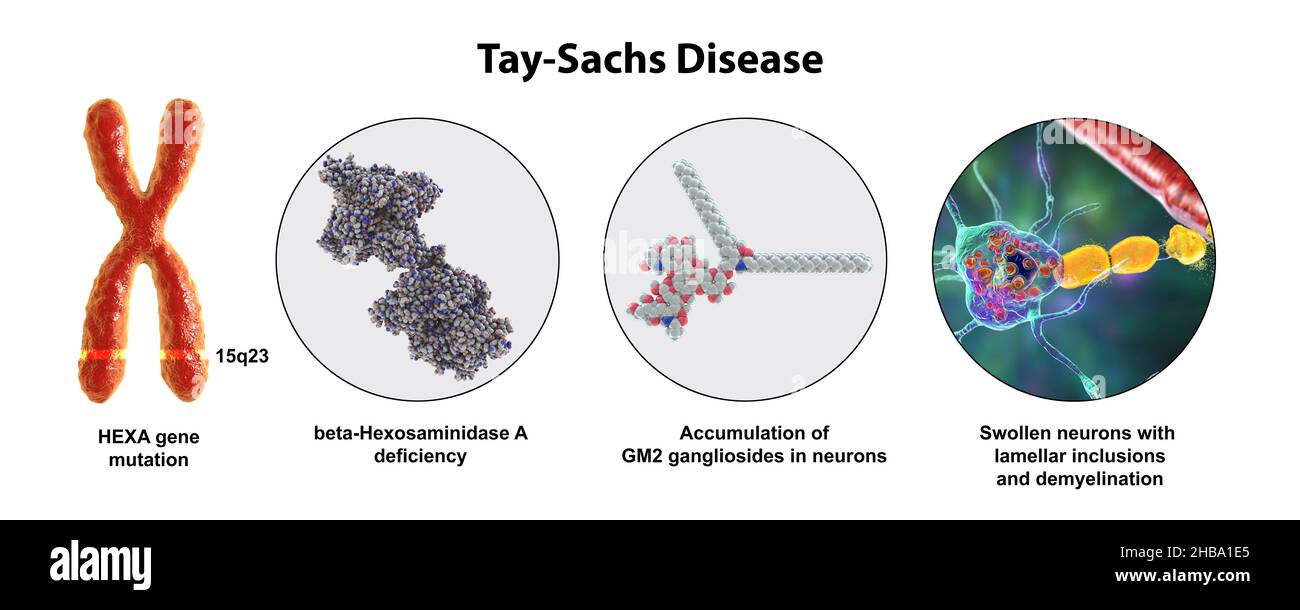 Illustration of Tay-Sachs disease, a genetic disorder that progressively destroys brain neurons. It is caused by a mutation in the HEXA gene of chromosome 15 leading to deficiency of hexosaminidase A. Neurons become swollen with lamellar inclusions due to accumulation of gangliosides in lysosomes with subsequent neuronal degeneration. Tay-sachs is most commonly seen in infants, manifesting in muscle weakness and decreased motor function, vision and hearing loss, and intellectual disability. Stock Photohttps://www.alamy.com/image-license-details/?v=1https://www.alamy.com/illustration-of-tay-sachs-disease-a-genetic-disorder-that-progressively-destroys-brain-neurons-it-is-caused-by-a-mutation-in-the-hexa-gene-of-chromosome-15-leading-to-deficiency-of-hexosaminidase-a-neurons-become-swollen-with-lamellar-inclusions-due-to-accumulation-of-gangliosides-in-lysosomes-with-subsequent-neuronal-degeneration-tay-sachs-is-most-commonly-seen-in-infants-manifesting-in-muscle-weakness-and-decreased-motor-function-vision-and-hearing-loss-and-intellectual-disability-image454451485.html
Illustration of Tay-Sachs disease, a genetic disorder that progressively destroys brain neurons. It is caused by a mutation in the HEXA gene of chromosome 15 leading to deficiency of hexosaminidase A. Neurons become swollen with lamellar inclusions due to accumulation of gangliosides in lysosomes with subsequent neuronal degeneration. Tay-sachs is most commonly seen in infants, manifesting in muscle weakness and decreased motor function, vision and hearing loss, and intellectual disability. Stock Photohttps://www.alamy.com/image-license-details/?v=1https://www.alamy.com/illustration-of-tay-sachs-disease-a-genetic-disorder-that-progressively-destroys-brain-neurons-it-is-caused-by-a-mutation-in-the-hexa-gene-of-chromosome-15-leading-to-deficiency-of-hexosaminidase-a-neurons-become-swollen-with-lamellar-inclusions-due-to-accumulation-of-gangliosides-in-lysosomes-with-subsequent-neuronal-degeneration-tay-sachs-is-most-commonly-seen-in-infants-manifesting-in-muscle-weakness-and-decreased-motor-function-vision-and-hearing-loss-and-intellectual-disability-image454451485.htmlRF2HBA1E5–Illustration of Tay-Sachs disease, a genetic disorder that progressively destroys brain neurons. It is caused by a mutation in the HEXA gene of chromosome 15 leading to deficiency of hexosaminidase A. Neurons become swollen with lamellar inclusions due to accumulation of gangliosides in lysosomes with subsequent neuronal degeneration. Tay-sachs is most commonly seen in infants, manifesting in muscle weakness and decreased motor function, vision and hearing loss, and intellectual disability.
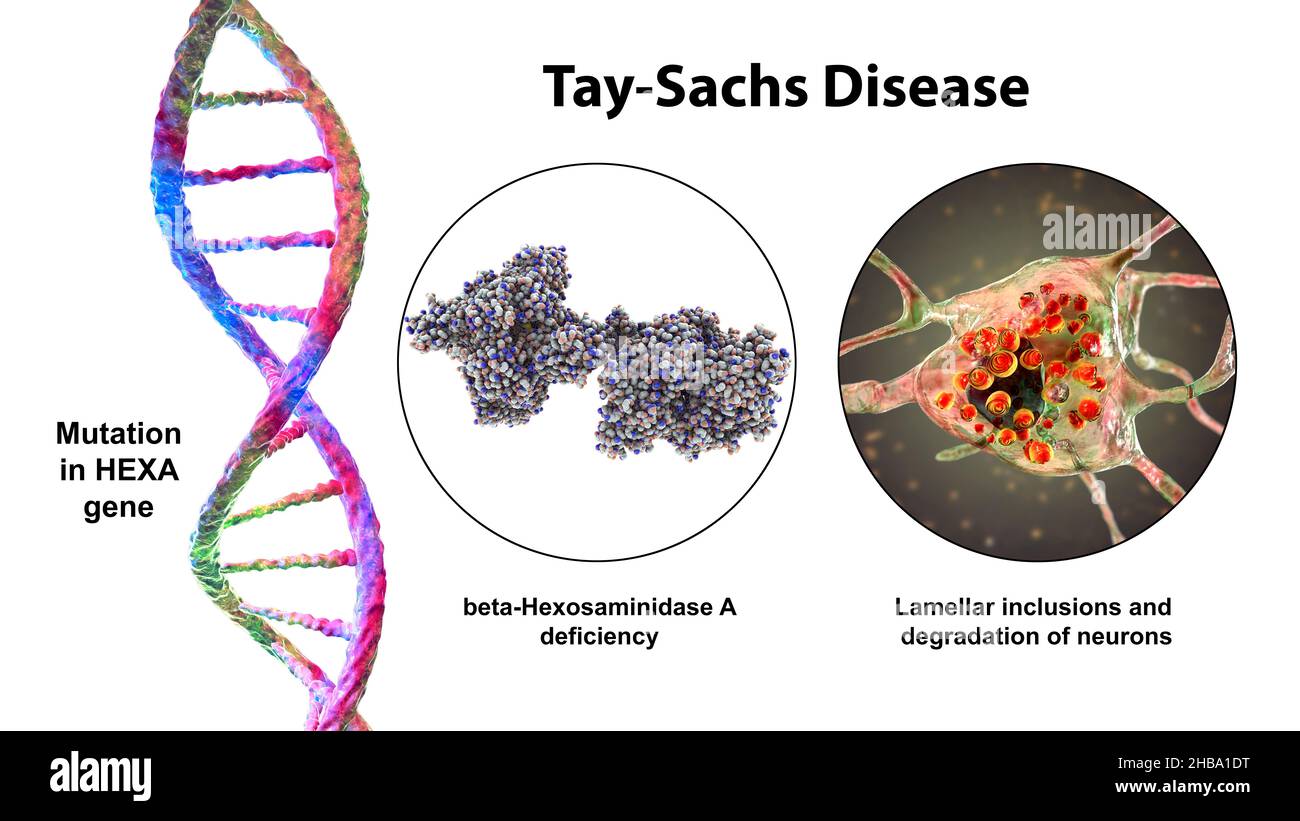 Tay-Sachs disease, illustration. A genetic disorder that progressively destroys brain neurons. It is caused by a mutation in the HEXA gene of chromosome 15 leading to deficiency of hexosaminidase A. Neurons become swollen with lamellar inclusions due to accumulation of gangliosides in lysosomes with subsequent neuronal degeneration. Tay-sachs is most commonly seen in infants, manifesting in muscle weakness and decreased motor function, vision and hearing loss, and intellectual disability. Stock Photohttps://www.alamy.com/image-license-details/?v=1https://www.alamy.com/tay-sachs-disease-illustration-a-genetic-disorder-that-progressively-destroys-brain-neurons-it-is-caused-by-a-mutation-in-the-hexa-gene-of-chromosome-15-leading-to-deficiency-of-hexosaminidase-a-neurons-become-swollen-with-lamellar-inclusions-due-to-accumulation-of-gangliosides-in-lysosomes-with-subsequent-neuronal-degeneration-tay-sachs-is-most-commonly-seen-in-infants-manifesting-in-muscle-weakness-and-decreased-motor-function-vision-and-hearing-loss-and-intellectual-disability-image454451476.html
Tay-Sachs disease, illustration. A genetic disorder that progressively destroys brain neurons. It is caused by a mutation in the HEXA gene of chromosome 15 leading to deficiency of hexosaminidase A. Neurons become swollen with lamellar inclusions due to accumulation of gangliosides in lysosomes with subsequent neuronal degeneration. Tay-sachs is most commonly seen in infants, manifesting in muscle weakness and decreased motor function, vision and hearing loss, and intellectual disability. Stock Photohttps://www.alamy.com/image-license-details/?v=1https://www.alamy.com/tay-sachs-disease-illustration-a-genetic-disorder-that-progressively-destroys-brain-neurons-it-is-caused-by-a-mutation-in-the-hexa-gene-of-chromosome-15-leading-to-deficiency-of-hexosaminidase-a-neurons-become-swollen-with-lamellar-inclusions-due-to-accumulation-of-gangliosides-in-lysosomes-with-subsequent-neuronal-degeneration-tay-sachs-is-most-commonly-seen-in-infants-manifesting-in-muscle-weakness-and-decreased-motor-function-vision-and-hearing-loss-and-intellectual-disability-image454451476.htmlRF2HBA1DT–Tay-Sachs disease, illustration. A genetic disorder that progressively destroys brain neurons. It is caused by a mutation in the HEXA gene of chromosome 15 leading to deficiency of hexosaminidase A. Neurons become swollen with lamellar inclusions due to accumulation of gangliosides in lysosomes with subsequent neuronal degeneration. Tay-sachs is most commonly seen in infants, manifesting in muscle weakness and decreased motor function, vision and hearing loss, and intellectual disability.